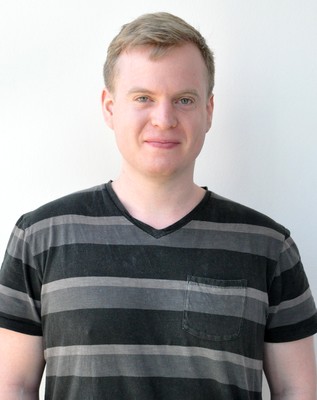Niklas Fournier
Niklas Fournier
Master Student
Fabrication of Filaments for 3D-Printing of Bioactive Glass / PLA Scaffolds using Fused Deposition Modeling
Betreuer: Thomas Distler, Prof. Dr.-Ing. habil. Aldo R. Boccaccini
Bone is known for its self-healing abilities [1] . Yet, if a bone defect reaches a critical size, the body is unable to heal it on its own. In this case, external support is required. Besides autografts and allografts, tissue engineering offers a convenient alternative to bone grafts. Scaffolds made of bioactive materials should bridge the gap in critical size defects to stimulate bone regrowth at those sites. For bone tissue to grow into the scaffold and to achieve optimal conditions for vascularization of the scaffold, porosity is an important factor. 3D printing allows production of scaffolds based on a computer aided design (CAD) which can result in a high control over scaffold porosity and its final shape [1]. In this project, two materials that are already part of treatments in orthopedics, namely PLA [2] and bioactive glass (BG) [3], are considered to produce 3D scaffolds by fused deposition modelling (FDM). BG is highly relevant in bone tissue engineering applications due its high bioactivity and interaction with bone cells [4]. The process will be investigated towards its feasibility to achieve high resolution composite scaffolds, aiming towards high filling grades of BG in the filaments. This approach could allow the production of personalized bone substitute materials.
[1] S. Bose, S. Vahabzadeh, and A. Bandyopadhyay, “Bone tissue engineering using 3D printing,” Mater. Today, vol. 16, no. 12, pp. 496–504, 2013.
[2] K. A. Athanasiou, C. M. Agrawal, F. A. Barber, and S. S. Burkhart, “Orthopaedic applications for PLA-PGA biodegradable polymers,” Arthroscopy, vol. 14, no. 7, pp. 726–737, 1998.
[3] L. L. Hench, „Opening paper 2015- Some comments on Bioglass: Four Eras of Discovery and Development“, Biomed. Glasses vol. 1, no. 1, pp. 1-11, 2015.
[4] Q. Z. Chen, I. D. Thompson, and A. R. Boccaccini, “45S5 Bioglass®-derived glass-ceramic scaffolds for bone tissue engineering,” Biomaterials, vol. 27, no. 11, pp. 2414–2425, 2006.

